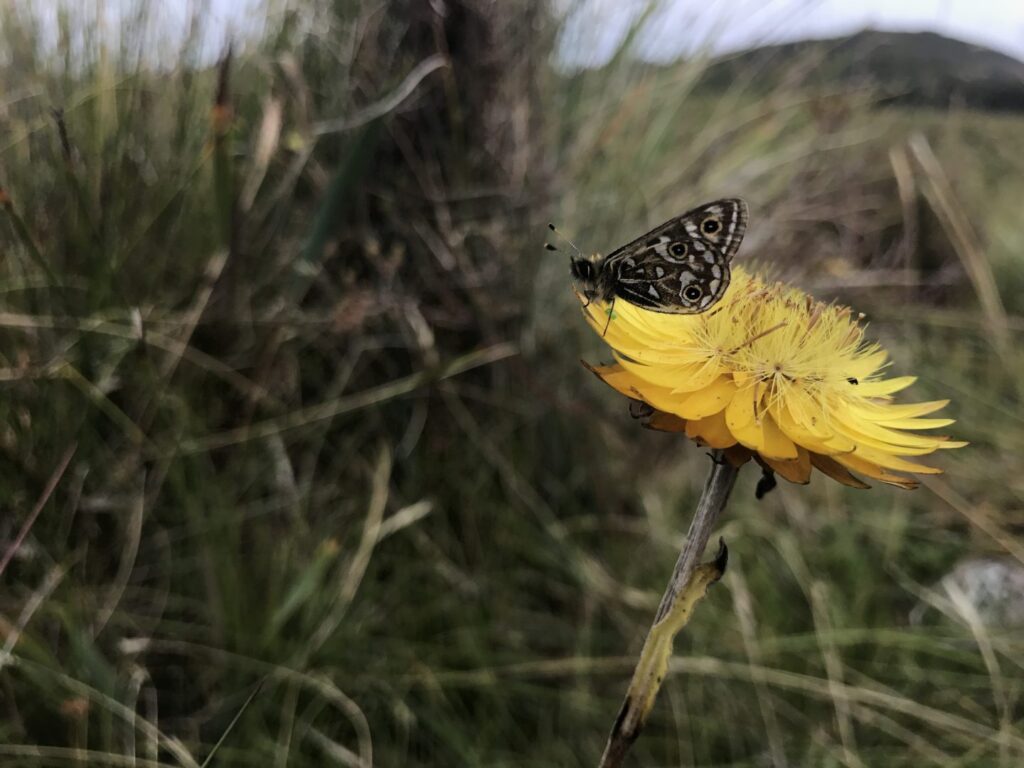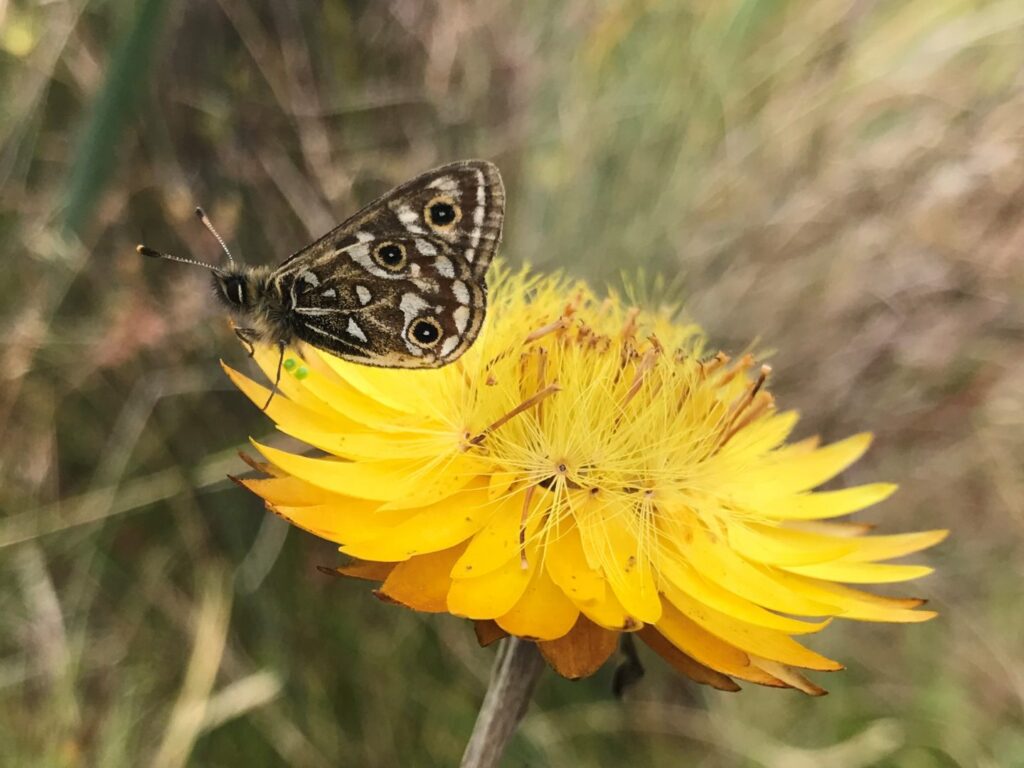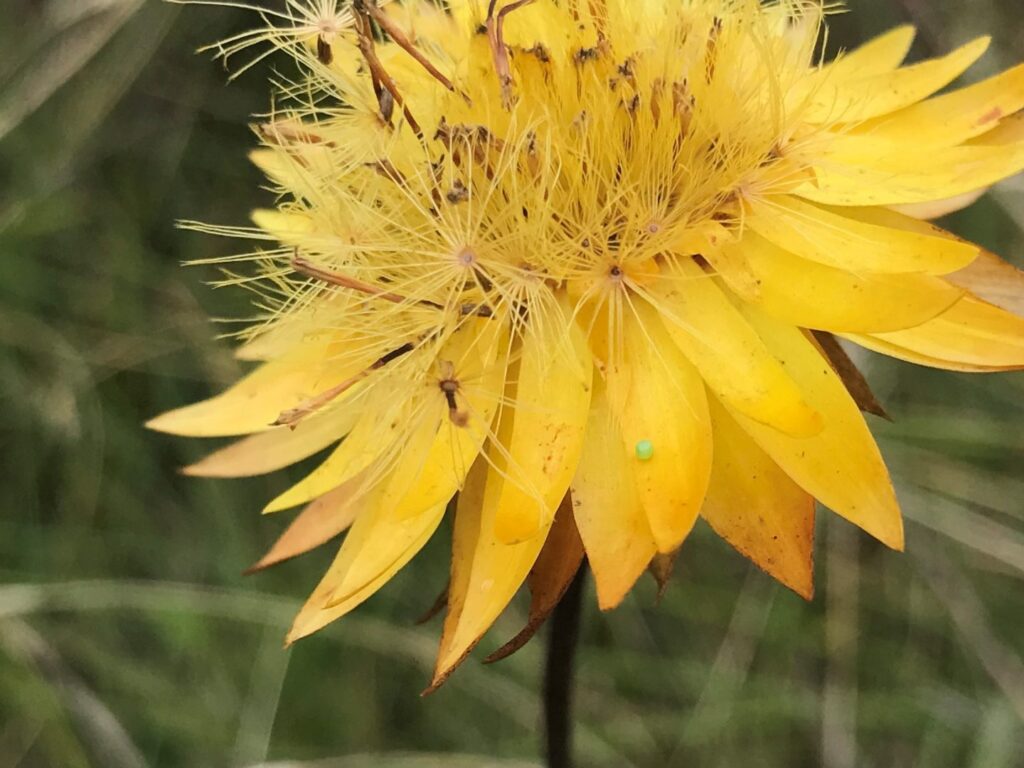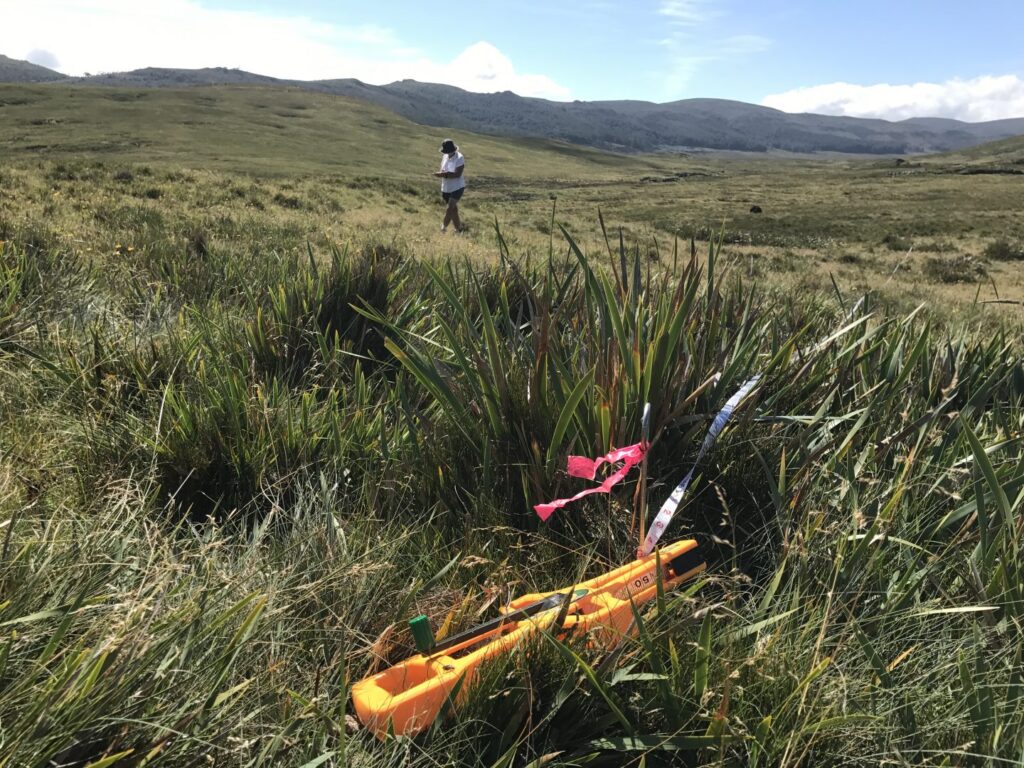The butterflies are ptunarra browns, and in this warm, still weather, it is not uncommon to record more than 50 individual butterflies along the 100 m long survey transect that I am following. Suddenly, the sun disappears behind a cloud, the warmth is replaced by a cool breeze and, like dust motes, the butterflies are gone.
Ptunarra brown butterflies are pretty special, but seeing them for the first time is a little underwhelming. With a wingspan of around 2 cm, they are very small for butterflies, and – unsurprisingly – they are brown. But once you have got the hang of spotting them, you start to notice the details that make them fascinating: the freshly hatched males are glossy black with cream spots, and the females are a rich chocolate brown with bright orange spots. Getting up close to them, it is impossible to miss how comically hairy they are, with hairs often longer than the width of their body. With a bit of luck and a sharp eye, you might even see their eggs randomly scattered in the grassland – shiny, lime green spheres, smaller than a pin head.
Across our vast planet, ptunarra brown butterflies only occur in Tasmania. They only occur in Poa tussock grasslands, and only above 400 m altitude. Their flying season is a mere three weeks long, in autumn, at the very tail end of the warm weather season, which is surprising, given that butterflies are not able to fly when it is wet or cold. In addition, they are not strong flyers, staying low to the ground and resting frequently, making it difficult for them to fly between separate grasslands. Perhaps unsurprisingly, they’re recognised nationally as being endangered, threatened by extinction if their grassland habitat continues to be lost. Protecting species from extinction is a part of TLC’s mission for Tasmania to be a world-leader in nature conservation and this unassuming species is one of the many beneficiaries of our work.
Walking to the next transect, the sun comes out once again, and the butterflies reappear out of nowhere and resume their search for mates, completely oblivious of the TLC and our role in ensuring their survival into the future.
Denna Kingdom is the TLC’s Reserve Manager, so counting butterflies is just part of the job. Denna and TLC volunteers have been conducting surveys of the ptunarra brown butterflies at the Vale of Belvoir since 2010.





